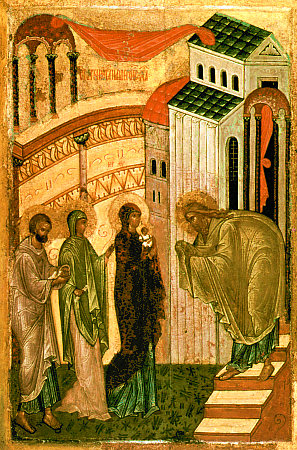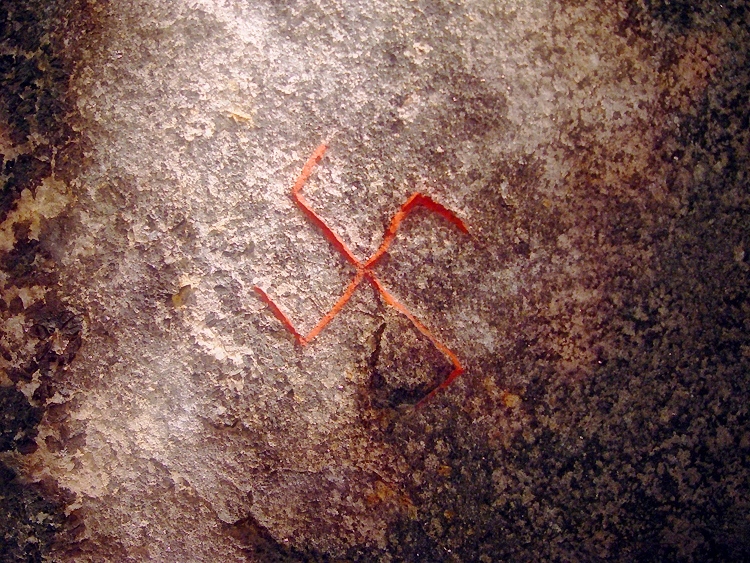|
Dobarsko
Dobarsko ( ) is a village in southwestern Bulgaria, part of Razlog Municipality, Blagoevgrad Province. It is set at 1,070 m above sea level on the southern slopes of Rila with the westernmost Rhodope Mountains to the east and Pirin to the south near the valley of the Mesta River. Dobarsko is 80 km from Blagoevgrad and 17 km from the winter resort Bansko. the village has a population of 672 and about 200 houses, the mayor being Nikola Naydenov. History According to the legend, Dobarsko was founded by soldiers from List of Bulgarian monarchs, Bulgarian tsar Samuil of Bulgaria, Samuil's blinded army after the Battle of Belasitsa in 1014, who arrived in the area en route to the Rila Monastery and discovered a holy spring that allegedly cured them. Dobarsko is first mentioned in Tsar Ivan Shishman of Bulgaria, Ivan Shishman's donor's charter from the Rila Monastery in 1378. During the Ottoman rule of Bulgaria Dobarsko established itself as the most important and richest vill ... [...More Info...] [...Related Items...] OR: [Wikipedia] [Google] [Baidu] |
Rila
Rila (, ) is the highest mountain range of Bulgaria, the Balkans, Balkan Peninsula, and Southeast Europe. It is situated in southwestern Bulgaria and forms part of the Rila–Rhodope Mountains, Rhodope Massif. The highest summit is Musala at an elevation of 2,925 m which makes Rila the sixth highest mountain range in Europe after the Caucasus, the Alps, Sierra Nevada (Spain), Sierra Nevada, the Pyrenees and Mount Etna, and the highest one between the Alps and the Caucasus. It spans a territory of 2,629 km2 with an average elevation of 1487 m. The mountain is believed to have been named after the Rilska River, river of the same name, which comes from the Old Bulgarian language, Old Bulgarian verb "рыти" meaning "to grub". Rila has abundant water resources. Some of the Balkans' longest and deepest rivers originate from Rila, including the Maritsa, Iskar (river), Iskar and Nestos (river), Mesta rivers. Bulgaria's main water divide separating the Black Sea and the A ... [...More Info...] [...Related Items...] OR: [Wikipedia] [Google] [Baidu] |
Theodore Of Amasea
: ''For another Saint Theodore, see: Theodore Stratelates or Saint Theodore (other)''. Saint Theodore (Άγιος Θεοδώρος), distinguished as Theodore of Amasea, Theodore the Recruit (Θεοδώρος ό Τήρων), and by other names, is a Christian saint and Great Martyr, particularly revered in the Eastern Orthodox Churches but also honored in Roman Catholicism and Oriental Orthodoxy. According to legend, he was a legionary in the Roman army who suffered martyrdom by immolation at Amasea in Galatian Pontus (modern Amasya, Turkey) during the Great Persecution under Diocletian in the early 4th century. Venerated by the late 4th century, he became a prominent warrior saint during the Middle Ages, attracted a great deal of additional legends including accounts of battle against dragons, and was often confused with (or was the original source of) the similar Theodore Stratelates of Heraclea. Names Theodore is the English form of the Latin masculin ... [...More Info...] [...Related Items...] OR: [Wikipedia] [Google] [Baidu] |
Razlog Municipality
Razlog Municipality is located in Blagoevgrad Province, Bulgaria. It has 22,124 inhabitants. The town of Razlog is the administrative centre. Places include: Demographics Religion According to the latest Bulgarian census of 2011, the religious composition, among those who answered the optional question on religious identification, was the following: References External links Municipalities in Blagoevgrad Province {{Blagoevgrad-geo-stub ... [...More Info...] [...Related Items...] OR: [Wikipedia] [Google] [Baidu] |
Razlog Valley
The Razlog Valley () is a valley in southwestern Bulgaria, Blagoevgrad Province, containing the Razlog, Bansko, and Belitsa municipalities. It is bounded by the Rila Mountains to the north and northwest, the Pirin Mountains to the south and southwest, and the Rhodope Mountains to the east. The transitional continental Mediterranean climate and nature of the valley are influenced by both the high alpine mountain “walls” of Rila and Pirin and the vast and wild Rhodopes, and the warm Mediterranean climate of the Aegean Sea entering from the south via the Mesta river course. It is home to Bansko, a renowned winter resort center and one of the top tourist destinations in Bulgaria. Another popular ski center is Semkovo. The valley is a syncline representing a structural sedimentary basin with an average altitude of the valley bottom of more than 800 m. The highest mountain ridges surrounding the valley reach almost 3000 m, and are rich in glacial landforms. In its northeastern ... [...More Info...] [...Related Items...] OR: [Wikipedia] [Google] [Baidu] |
Countries Of The World
The following is a list providing an overview of sovereign states around the world with information on their status and recognition of their sovereignty. The 205 listed states can be divided into three categories based on membership within the United Nations System: 193 member states of the United Nations, UN member states, two United Nations General Assembly observers#Current non-member observers, UN General Assembly non-member observer states, and ten other states. The ''sovereignty dispute'' column indicates states having undisputed sovereignty (188 states, of which there are 187 UN member states and one UN General Assembly non-member observer state), states having disputed sovereignty (15 states, of which there are six UN member states, one UN General Assembly non-member observer state, and eight de facto states), and states having a political status of the Cook Islands and Niue, special political status (two states, both in associated state, free association with New ... [...More Info...] [...Related Items...] OR: [Wikipedia] [Google] [Baidu] |
Ivan Shishman Of Bulgaria
Ivan Shishman of Bulgaria () ruled as emperor (tsar) of Bulgaria in Tarnovo from 1371 to 3 June 1395. The authority of Ivan Shishman was limited to the central parts of the Bulgarian Empire. In the wake of the death of Ivan Alexander of Bulgaria, the Bulgarian Empire was subdivided into three kingdoms among his sons, with Ivan Shishman taking the Tаrnovo Kingdom situated in central Bulgaria and his half brother Ivan Sratsimir of Bulgaria holding the Vidin Tsardom. Although his struggle to repel the Ottomans differentiated him from the other rulers on the Balkans like the Serbian despot Stephan Lazarevic who became a loyal vassal to the Ottomans and paid annual tribute and participated in all of the Ottoman campaigns subsequent to the battle of Kosovo, contributing a 5000 strong contingent of christian knights. Although Ivan Shishman has been categorized as indecisive and inconsistent in his policy in the past, this was done with little regard for an understanding of the context ... [...More Info...] [...Related Items...] OR: [Wikipedia] [Google] [Baidu] |
Cant (language)
A cant is the jargon or language of a group, often employed to exclude or mislead people outside the group.McArthur, T. (ed.) ''The Oxford Companion to the English Language'' (1992) Oxford University Press It may also be called a cryptolect, argot, pseudo-language, anti-language or secret language. Each term differs slightly in meaning; their uses are inconsistent. Etymology There are two main schools of thought on the origin of the word ''cant'': * In linguistics, the derivation is normally seen to be from the Irish word (older spelling ), "speech, talk", or Scottish Gaelic . It is seen to have derived amongst the itinerant groups of people in Ireland and Scotland, who hailed from both Irish/Scottish Gaelic and English-speaking backgrounds, ultimately developing as various creole languages. However, the various types of cant (Scottish/Irish) are mutually unintelligible. The Irish creole variant is termed " the cant". Its speakers from the Irish Traveller community know it as ... [...More Info...] [...Related Items...] OR: [Wikipedia] [Google] [Baidu] |
Bulgarian National Revival
The Bulgarian Revival (, ''Balgarsko vazrazhdane'' or simply: Възраждане, ''Vazrazhdane'', and ), sometimes called the Bulgarian National Revival, was a period of socio-economic development and national integration among Bulgarian people under Ottoman Empire, Ottoman rule. It is commonly accepted to have started with the historical book, ''Istoriya Slavyanobolgarskaya'', written in 1762 by Paisius of Hilendar, Paisius, a Bulgarian monk of the Hilandar monastery at Mount Athos, leading to the National awakening of Bulgaria and the Bulgarian National Awakening, modern Bulgarian nationalism, and lasting until the Liberation of Bulgaria in 1878 as a result of the Russo-Turkish War (1877–1878), Russo-Turkish War of 1877–1878. Characteristics The period is remarkable for its characteristic architecture which can still be observed in old Bulgarian towns such as Tryavna, Koprivshtitsa and Veliko Tarnovo, the rich literary heritage of authors like Ivan Vazov and Hristo Bo ... [...More Info...] [...Related Items...] OR: [Wikipedia] [Google] [Baidu] |
Purification Of The Virgin
The Presentation of Jesus is an early episode in the life of Jesus Christ, describing his presentation at the Temple in Jerusalem. It is celebrated by many churches 40 days after Christmas on Candlemas, or the "Feast of the Presentation of Jesus". The episode is described in chapter 2 of the Gospel of Luke in the New Testament. Within the account, "Luke's narration of the Presentation in the Temple combines the purification rite with the Jewish ceremony of the redemption of the firstborn (Luke 2, )." In the Eastern Orthodox Church, the Presentation of Jesus at the temple is celebrated as one of the twelve Great Feasts, and is sometimes called ''Hypapante'' (, "meeting" in Greek). The Orthodox Churches which use the Julian Calendar celebrate it on 15 February, and the Armenian Church on 14 February. In Western Christianity, the ''Feast of the Presentation of the Lord'' is also known by its earlier name as the ''Feast of the Purification of the Virgin'' or the ''Meeting of t ... [...More Info...] [...Related Items...] OR: [Wikipedia] [Google] [Baidu] |
Swastika
The swastika (卐 or 卍, ) is a symbol used in various Eurasian religions and cultures, as well as a few Indigenous peoples of Africa, African and Indigenous peoples of the Americas, American cultures. In the Western world, it is widely recognized as a symbol of the German Nazi Party who Cultural appropriation, appropriated it for their party insignia starting in the early 20th century. The appropriation continues with its use by Neo-Nazism, neo-Nazis around the world. The swastika was and continues to be used as a symbol of divinity and spirituality in Indian religions, including Hinduism, Buddhism, and Jainism. It generally takes the form of a cross, the arms of which are of equal length and perpendicular to the adjacent arms, each bent midway at a right angle. The word ''swastika'' comes from , meaning 'conducive to well-being'. In Hinduism, the right-facing symbol (clockwise) () is called , symbolizing ('sun'), prosperity and good luck, while the left-facing symbol ... [...More Info...] [...Related Items...] OR: [Wikipedia] [Google] [Baidu] |
Serres, Greece
Serres ( ) is a city in Macedonia, Greece, capital of the Serres regional unit and second largest city in the region of Central Macedonia, after Thessaloniki. Serres is one of the administrative and economic centers of Northern Greece. The city is situated in a fertile plain at an elevation of about , some northeast of the Strymon river and north-east of Thessaloniki, respectively. Serres' official municipal population was 70,703 in 2021. The city is home to the Department of Physical Education and Sport Science of the Aristotle University of Thessaloniki () and the Serres Campus of the International Hellenic University (former "Technological Educational Institute of Central Macedonia"), composed of the Faculty of Engineering, the Faculty of Economics and Management, and the Department of Interior Architecture and Design. The head of the Faculty of Engineering of the International Hellenic University is located in Serres. Names The Ancient Greek historian Herodotus mentions ... [...More Info...] [...Related Items...] OR: [Wikipedia] [Google] [Baidu] |






